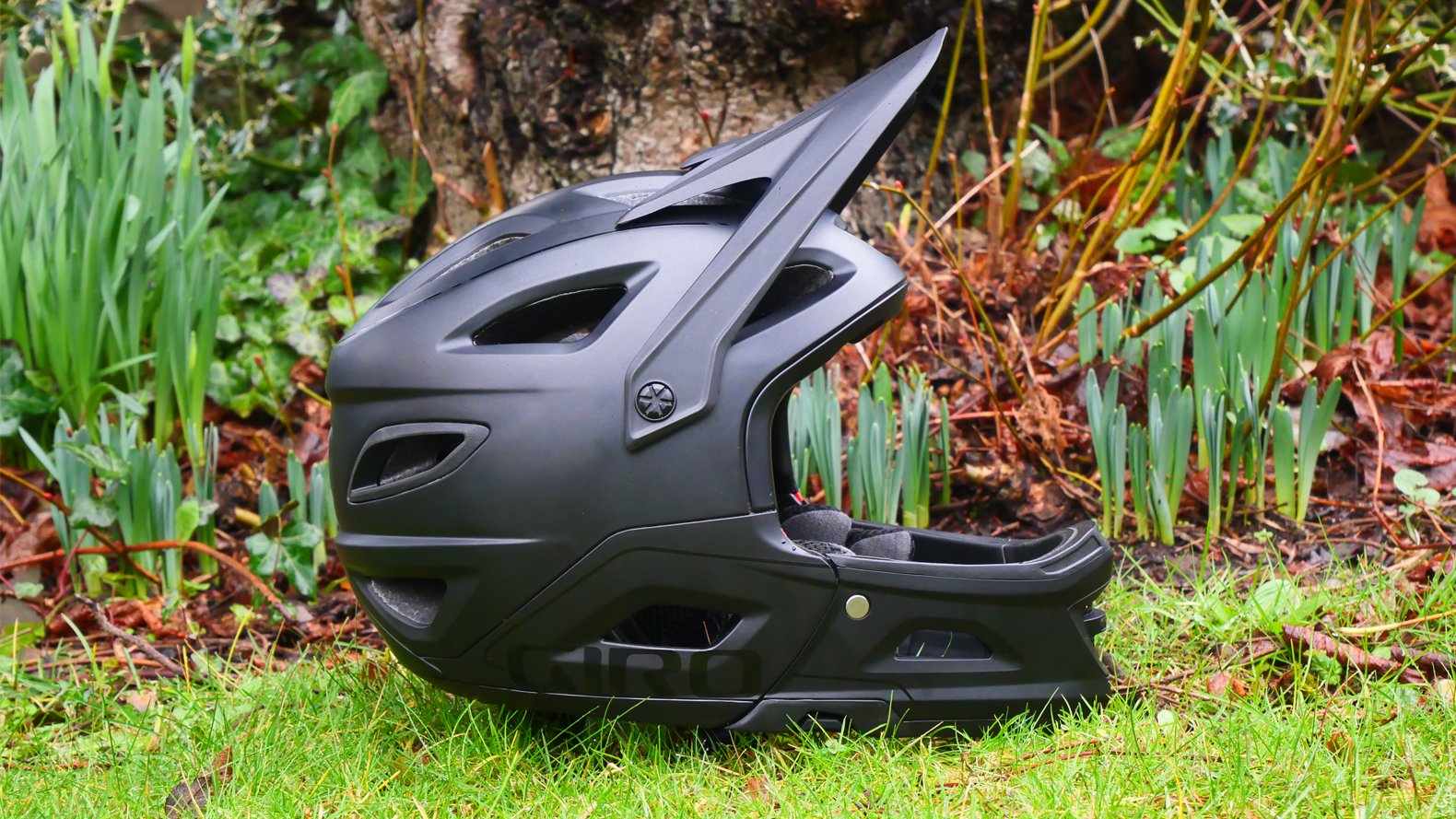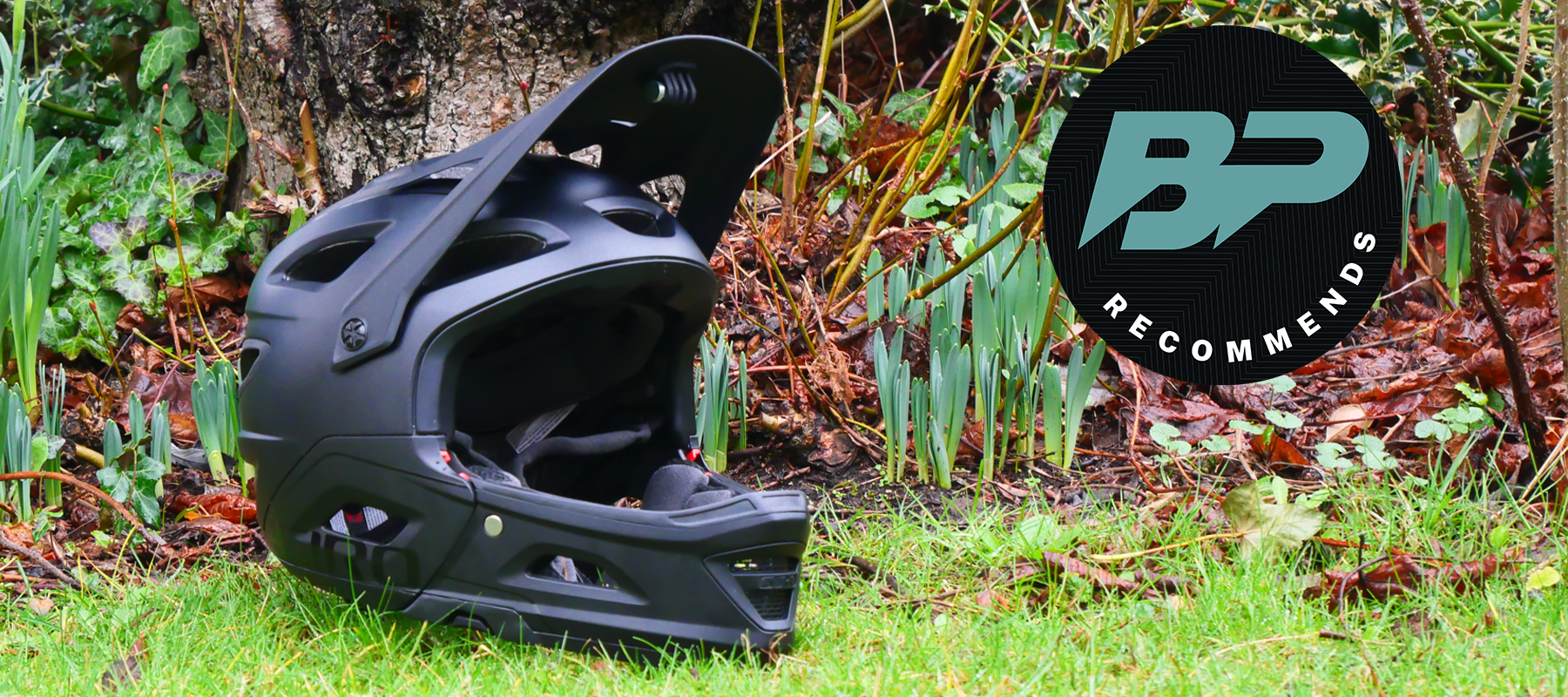Bike Perfect Verdict
Giro’s Switchblade is an easy-to-convert MIPS-equipped full-face helmet that works well as both an open-face on the trail and full-face when descending. Its heavier than a modern enduro-specific lightweight full-face helmet though which might put some riders off.
Pros
- +
Secure chin bar is easily attached or removed
- +
DH-rated chin bar
- +
No rattling
- +
Decent ventilation considering the coverage
- +
Still offers great coverage with chin bar removed
- +
Two visors included
Cons
- -
Larger than expected sizing
- -
D-Ring fastener is fiddlier than a normal buckle
- -
Helmet is tight to get on with the chin bar in place
Why trust BikePerfect
The convertible full-face helmets have been around since late '90s/early 2000s, in fact, the Giro Switchblade was one of the first helmets to introduce the concept back in the day.
Luckily helmet tech has come a long way since then and the modern-day Switchblade is considerably more refined and protective than the first generation, featuring deep coverage, MIPS liner, and ASTM Downhill Certification.
For riders looking for an enduro helmet with the flexibility of having open or full-face MTB helmet protection, the Switchblade is a great option, but is the convertible Giro Switchblade the best of both worlds?

Design and specification
The Switchblade is rated to multiple certifications, meeting CPSC, EN-1078, and ASTM-1952-DH standards with and without the chin bar. Inside there is a MIPS liner to protect against rotational forces and a Giro’s Roc Loc Air DH head retention system which uses a dial to fine-tune fit. You get two sets of hydrophilic (water absorbing) pads with different thicknesses and they are antimicrobial to keep stink to a minimum.
A D-ring chin fastener has been fitted which offers loads of security although it's a bit more fiddly than a regular clip. The helmet comes with two visors, the standard one which has three positions giving a broad range of movement, or a P.O.V. Plus action camera mount version that is fixed in place.
The Switchblade weighs 668g when worn as a half-shell with the chin bar adding an extra 297g. That means in its half-shell format it's not much heavier than Giro’s own deep coverage Tyrant although it's considerably weightier than other enduro/trail-focused helmets like POC’s Kortal Race MIPS. With the chin bar added, the overall weight comes to 965g which is around the same weight as dedicated downhill helmets and considerably heavier than the lightweight enduro lids like the Specialized Gambit and the POC Otocon that have been released over the last few years.

Performance
If your riding involves trail riding as well as gravity riding, then a convertible helmet makes a lot of sense, giving you a two-for-one option of either open face or with the chin bar. The Switchblade is also a big win if your enduro/downhill trails require a lot of climbing and warmer weather can tempt you away from wearing your traditional full-face helmet. That's a big safety bonus, as enduro trails become more technical having the protection of a full-face is becoming increasingly important, especially as dry trails also usually see higher speeds.
Bear in mind that you will need somewhere to stash the chin bar on the way back up. If you ride with a backpack that's no problem, however, I found it would happily stay put hooked around a waist pack strap or even an action camera chesty strap when climbing.
The chin bar is easy to click in place or remove without needing to take off the helmet so it adds very minimal faff on each end of the descent. Locating the locking points is made easier as there are two small ‘brail’ bumps to help you feel your way when locating the fastening mechanism and locking in place. You will need to remove your goggles to fit the chin bar, but there is plenty of space under the visor to tuck them above, unless you have an action camera mounted to the visor. Once fitted there's no rattling from the chin bar either and it's easy enough to unclip using the buttons on the underside of the chin bar and remove it when you're faced with another long climb. The chin bar feels pretty sturdy too although I was lucky enough not to need to test that out on the trails.

The Switchblade works well as an open-face helmet for trail days too. The deeper fit around the ears gives loads of coverage and there is minimal locking mechanism on show when the chin bar isn't fitted so it doesn't look like you're riding around in half a full-face. It's not going to be as cool as the best trail helmets, but for seshing trails or general riding the 20 vents work well.
There was a manufacturing issue with my review sample which resulted in the section of the EPS becoming damaged where the chin bar mounts. It's not clear what caused this, however, I spoke to Giro about it and they have assured me that this is an unusual fault. Considering the helmet has been on the market for a while now I suspect that if this was a common issue we would have heard about it already.

Verdict
For riders looking for the flexibility of an open-face helmet for trail and more downhill protection from a single helmet then the Switchblade is a great option. It’s easy to rationalize open-face comfort when riding big days, but as riders push their limits on big enduro days having the added chin bar protection is a sensible idea.
The Switchblade is comfortable and easy enough to swap between open-face and full-face meaning I was happy to remove it in between runs for cooler climbing. I would like to see a clip rather than a D-lock chin strap though and it's a bit of a faff to get the helmet on as I needed to remove the chin bar to get my head in.
The latest Switchblade has been out for a while now and since its release, a number of lightweight enduro-focused full-face helmets have come onto the market. These combine great ventilation whilst undercutting the Switchblade’s weight significantly. I found on long days on the bike the weight of the Switchblade would cause my neck to become tired. This could be due to me being more used to lighter-weight trail helmets but it's something worth considering. Personally, I would probably opt for a modern enduro full-face due to the lower weight, however, if you prefer an open face for climbing or looking for a two-in-one design of a convertible helmet then the Switchblade is a great option.
Tech specs: Giro Switchblade full-face helmet
- Price: $280.00 / £269.99
- Weight: Half-shell 668g, chin bar 297g (size medium)
- Sizes: Small, medium, large
- Colors: Matte Black/Gloss Black, Matte Harbor Blue, Matte Metallic Black/Ano Lime

Graham Cottingham joined the BikePerfect team as our senior tech writer in 2020. With over 20 years of riding experience, he has dabbled in downhill, enduro, and gravel racing. Not afraid of a challenge, Graham has embraced bikepacking over the last few years and likes nothing more than strapping some bags to his bike and covering big miles to explore Scotland's wildernesses. When he isn’t shredding the gnar in the Tweed Valley, sleeping in bushes, or tinkering with bikes, he is writing tech reviews for BikePerfect.
Rides: Cotic SolarisMax, Stooge MK4, 24 Bicycles Le Toy 3, Surly Steamroller
Height: 177cm
Weight: 71kg

